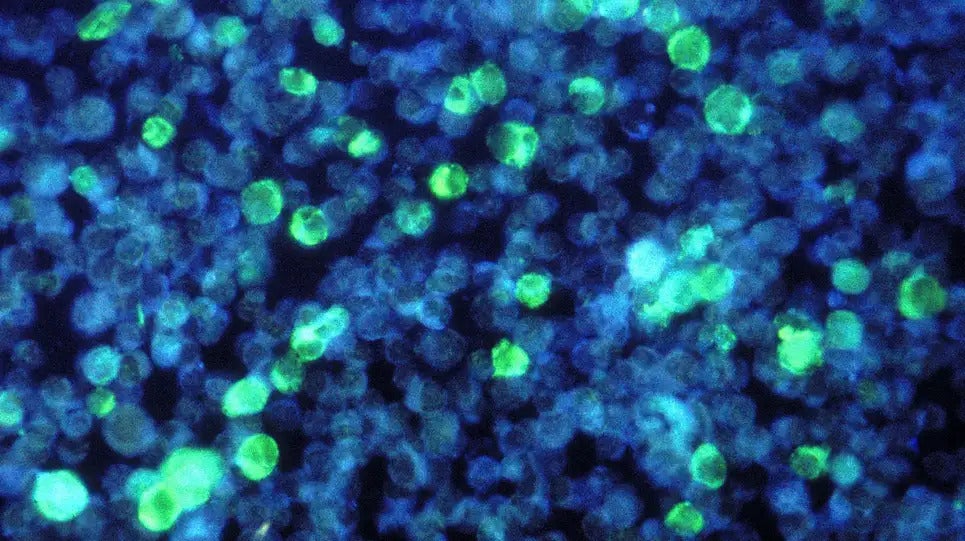The past year brought us inspiring advances in medical and health science, from new insights into devastating diseases like multiple sclerosis and lupus to innovative treatments for hair loss and obesity. While some of these breakthroughs, like transplanting pig organs into people, are still far from becoming mainstream therapies, 2022 saw several developments that are already changing lives for the better.
Pig Organ Transplants

Several research teams have advanced the science of animal-to-human transplantation, or xenotransplantation, by leaps and bounds over the last year and a half. They’ve shown that organs taken from pigs genetically modified to more closely resemble humans can survive the initial journey into a human body without acute rejection. In January, a University of Alabama team became the first to document transplanting two kidneys into a brain-dead patient.
As important as these achievements are, they’re the only first step to making xenotransplantation a realistic solution for addressing the chronic donor organ shortage, and there have been recent setbacks as well. In March 2022, a terminally ill man who became the first living recipient of a modified pig heart unexpectedly died two months after the operation, possibly due to a hidden infection transmitted via the pig heart.
A New Era of Hair Loss Treatment

For years now, some scientists have been studying whether a class of drugs already used to treat autoimmune conditions, known as JAK inhibitors, might also be able to help with a certain type of hair loss known as alopecia areata. In June, the Food and Drug Administration finally validated this work when it approved baricitinib as the first JAK inhibitor for severe alopecia areata.
Alopecia areata is thought to affect as many as 7 million Americans, and while some people can benefit from existing treatments, there hadn’t been any specific drugs that attack the root cause of the condition (an overactive immune system) available to them until now. Those with severe alopecia areata can lose all the hair along the body and scalp. In clinical trials, baricitinib was found to restore substantial amounts of hair to about a third of these patients on the highest dose.
The approval is unlikely to be the only of its kind, as other and possibly even more effective JAK inhibitors are now being studied in clinical trials.
Uncovering the Leading Cause of Multiple Sclerosis

Multiple sclerosis is a devastating and still poorly understood neurological condition that’s estimated to affect about 1 million people in the U.S. In January, a large team of scientists published research that appears to have confirmed the primary trigger of MS: an infection caused by the Epstein-Barr virus.
Using meticulously maintained health records from the U.S. military, the team showed that catching EBV significantly raised the risk of later developing MS years down the road. Only a small percentage of people infected with EBV ever develop MS, so there are likely other factors that predispose people to it. But other outside experts have agreed with the team’s findings, which could point to new effective treatments or preventative measures against the debilitating ailment, such as a vaccine against EBV.
Drug-Delivering Contact Lenses

In March, the FDA approved the first contact lenses that not only help improve vision but actively deliver medicine to the eyes. The lenses were developed by Johnson & Johnson and are sold as part of its Acuvue brand of disposable contacts. They release a commonly used antihistamine called ketotifen, which is expected to help prevent or treat itchy eyes from allergy for up to 12 hours.
Though this is a relatively simple application, doctors hope that the technology can soon be used to help treat more serious eye conditions, like cataracts and glaucoma.
A Possible Cure for Lupus

In September, researchers in Germany published tantalising if still early research that could herald a new era for the treatment of lupus. In a small trial, they found that lupus patients given an existing cancer treatment experienced a sustained remission of their illness for up to 17 monthstcan .
The treatment is called CAR T cell therapy, and it works by modifying a patient’s T cells in the lab to better target certain cancers and then infusing them back into the body. The researchers theorised that these modified T cells could also target the misguided immune cells that produce the autoantibodies responsible for lupus. And so far, they appear to be right. All five of the patients in the study experienced an improvement in symptoms following CAR T cell therapy, along with a complete loss of lupus-related autoantibodies.
Time will have to tell whether the remission seen in these patients is truly permanent and if the team’s success can be replicated with more patients. But this therapy could represent a major breakthrough in treating the chronic condition.
Gene Therapy for Hemophilia
In November, the FDA approved the first treatment of its kind for hemophilia B, a rare genetic condition that saps a person’s ability to properly clot blood. The treatment, now called Hemgenix, is a gene therapy that delivers a functional copy of the gene that’s dysfunctional in those with hemophilia B.
Developed by CSL Behring, Hemgenix won’t come cheap. It’s expected to cost $US3.5 ($5) million per patient, the highest list price yet for a single-dose treatment. But its makers expect the drug to be worthwhile, since it should reduce how often patients need expensive infusions of their missing clotting factor. Other gene therapies for hemophilia A and B may soon reach the market as well.
The Success of the Polypill

Not all medical breakthroughs are necessarily expensive. In August, a three-in-one combination pill for heart disease, also known as the polypill, passed its largest test yet. In a large multinational trial of heart attack survivors, the polypill — containing aspirin, a common statin known as atorvastatin, and the ACE inhibitor ramipril — was shown to prevent more heart attacks, strokes, and other cardiovascular events than standard care. As hoped, patients were also more able to keep regularly taking the bundled medication than those taking the treatments individually.
The findings are expected to pave the way for the polypill, developed by the company company Ferrer and approved in the EU and some other countries as Trinomia, to become more widely approved. And since the treatment is made of already cheap drugs, it should remain a cost-effective option for helping heart attack survivors stay healthy.
Treating a Deadly Genetic Disease in the Womb

In November, doctors in the U.S. and Canada reported a medical first. They were able to start treating a patient’s deadly genetic disease in the womb, seemingly helping to prevent the fatal complications that killed her siblings.
Their patient — a young girl named Ayla — was diagnosed with Pompe disease, a rare condition that prevents people from breaking down stored glycogen in the body. Those with early onset Pompe often die or develop severe developmental problems within years, even when the standard treatment, enzyme replacement therapy, is given soon after birth. But researchers at University of California San Francisco have begun a small trial testing whether providing this treatment even earlier, in the womb, might provide better outcomes, with Ayla being their first patient.
So far, the strategy seems to have worked. Ayla has avoided the problems that her siblings had, such as an enlarged heart at birth, and nearly two years later, she is meeting her developmental milestones on time. Ayla will need to keep taking enzyme replacement therapy for the foreseeable future, but the findings of this ongoing research could someday lead to a new standard of care for patients like her.
Cancer-Fighting Viruses

In September, scientists revealed the results of a Phase I clinical trial that could be a preview for a new avenue of cancer treatment — one that relies on recruiting viruses to fight on our behalf.
The treatment is called RP2, and it’s a genetically engineered strain of herpes simplex 1, the virus responsible for most cases of oral herpes in humans. Developed by company Replimune, RP2 is meant to both selectively kill cancer cells and boost the immune system’s ability to target and neutralise the cancer. Out of 39 patients with advanced cancer given RP2, either alone or in combination with an immunotherapy treatment, 10 patients appeared to respond to it, meaning their cancers stopped growing or shrank, while one patient even seemed to experience a complete remission that has lasted for at least 15 months.
Phase I trials are only the beginning of showing that a drug can work in people, and it will take studying many more patients to confirm whether RP2 can be an effective cancer treatment. But there are similar drugs in development, so it may only be a matter of time before doctors will be able to adopt this new strategy of treating cancer.
A Surgery-Like Obesity Treatment

In May, company Eli Lilly announced the results of the Phase III trial for its type 2 diabetes and obesity drug, tirzepatide. People given the highest doses of the drug lost up 22% of their baseline body weight, far above the average weight loss seen in those given standard diet and exercise advice. Tirzepatide’s results even proved to be more substantial than those seen with Novo Nordisk’s similar drug Wegovy, approved for obesity last year, and are close to approaching the average weight loss seen with the most effective bariatric surgeries.
Since then, tirzepatide has been approved by the FDA as a type 2 diabetes treatment (sold under the brand name Mounjaro). Eli Lilly is expected to complete the application for a potential approval as a obesity treatment by March next year, and it will likely receive the go-ahead by early 2024. Similar candidates are in the pipeline, and many obesity experts believe these drugs will radically reshape the landscape of obesity treatment in the years to come. At the same time, they’re also expected to be very expensive and may be not regularly covered by health plans (Wegovy currently costs over $US1,000 ($1,388) per month without insurance).
